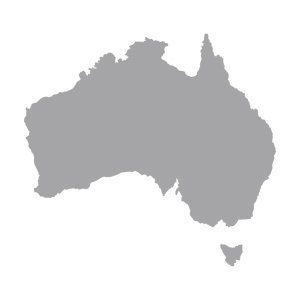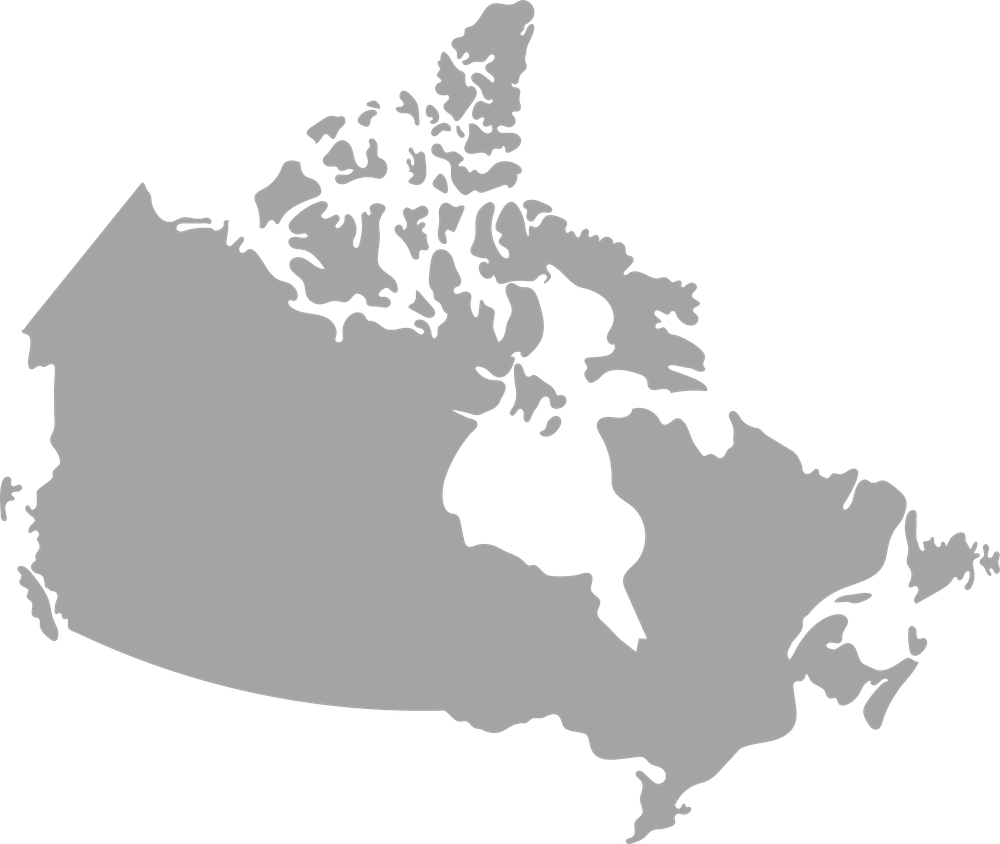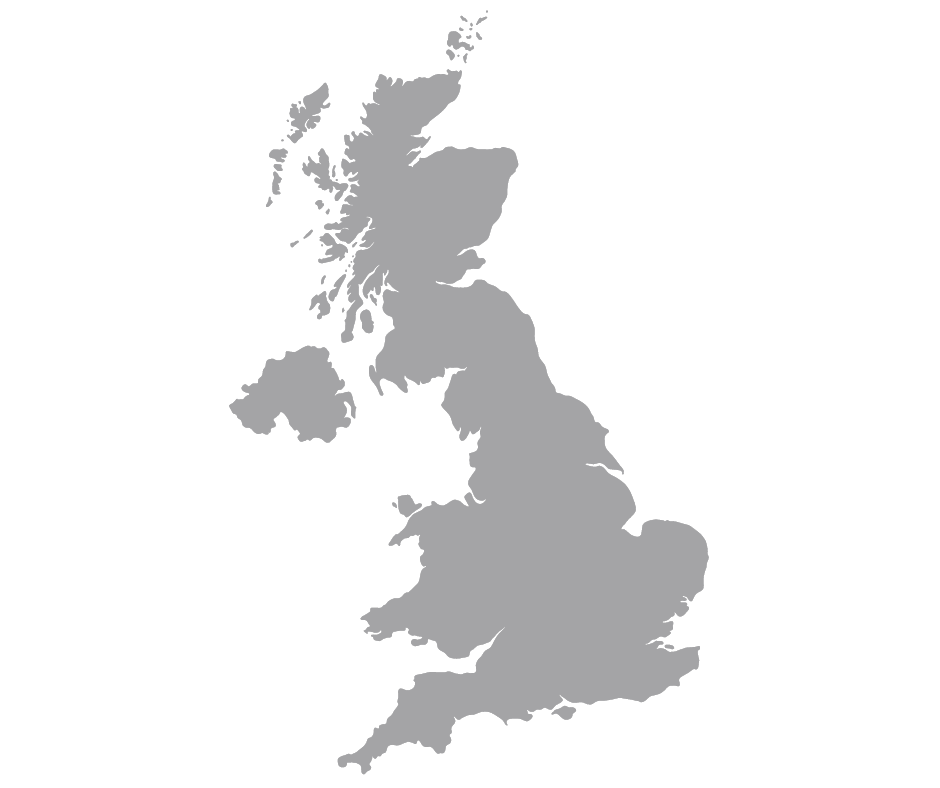CNTI’s Summary
Journalists are increasingly becoming the targets of online abuse. Moderating abusive content carries many complexities due to the number of actors committing online abuse and the existing protections in many countries for freedom of expression. Countries are beginning to create comprehensive legislation regarding online safety, but many countries do not yet have laws to protect individuals (and, by extension, journalists) from online harassment. While there are resources for journalists to learn about how to identify, record and report online abuse, these efforts alone are not enough. Online abuse is unlikely to be completely eliminated, but there are steps that can be taken to mitigate online abuse and better protect the press.
The Issue
Technological developments have increased the reach of quality journalism, allowed more diverse outlets to share historically underrepresented perspectives and created new forms of engagement between journalists and the public. These developments have also exposed journalists and news organizations to new forms of online harassment and abuse. There are many contributing factors at play, including new digital pathways and access points as well as heightened anti-press language from many political leaders around the world.
While online harassment does not have a universally agreed on definition, it is generally accepted when defined as the use of “technology — like cellphones, computers, social media, or gaming platforms — to bully, threaten, or aggressively hassle someone” as well as “pervasive or severe targeting of an individual or group online through harmful behavior.” The actions included in these definitions affect journalists in significant ways. They cause psychological and emotional distress, self-censorship of content and self-distancing from audiences to avoid further harassment. (This primer focuses specifically on online abuse but it is important to note that physical abuse toward journalists has also increased.)
According to recent surveys, most journalists report experiencing some form of online harassment or abuse. The data show online harassment disproportionately affects women journalists and journalists from minority backgrounds, who also report higher rates of sexual and gendered harassment online. The International Center for Journalists’ (ICFJ) in-depth 2022 report details many of the online experiences women journalists are encountering globally.
The increases in online abuse are adding pressure on legislative bodies, tech companies and civil organizations across the world to respond. In many cases, legislative bodies have responded with regulations that would require technology companies to enforce stricter content moderation protocols, based on the sense that current practices are not providing adequate protection. Discussions in the United States have centered on Section 230 of the Communications Decency Act which provides online service providers with limited immunity from the behaviors of people on their platforms. Australia and the United Kingdom recently passed legislation related to online safety which (1) define abusive content, (2) require new oversight of online service providers and (3) provide new oversight authority to government agencies.
Yet, finding the appropriate level of content moderation is difficult. On one hand, heavy content restriction can — and often does — threaten freedom of speech and expression by affecting people’s willingness to express their views. It is also challenging to maintain from a resource perspective. On the other hand, letting “anything in” may invite further abusive content which leads to other detrimental effects on an informed society such as self-censorship and the open flow of disinformation. Either way, it raises questions about the degree of power put in the hands of platform companies when deciding what content makes it to the public’s eye. And while end-to-end encrypted (E2EE) communications have generally been a valuable asset for journalists, tracking and addressing abusive content on those platforms has added complexity. Striking the right level of moderation and balance between free speech and harassment is challenging, though there are successful cases such as Reddit.
Aside from legislative interventions, technology companies, news companies and civil service organizations are providing journalists with tools to identify, report and mitigate harmful online content. Approaches to limit online abuse need to include both proactive measures, like improving personal online privacy and security, and reactive measures like blocking and documenting abuse. Some of the existing tools include artificial intelligence (AI) software to filter, block and securely store online abuse material that can later be examined and/or reported, cyber toolkits to increase journalists’ online safety, field manuals and online guides. “Toxic” content is also being addressed with Google’s Jigsaw which is developing tools like Perspective to mitigate online harassment. There are calls for updating or rebuilding some of these tools to be more functional and effective in the current environment. Removing all harmful content, however, is likely unfeasible.
Even with updates, there is a strong consensus that these non-legislative actions and tools are not enough. Some journalists experiencing online harassment report low trust in existing protections from online abuse and a dissatisfaction with newsrooms’ social media policies. Other journalists believe their newsrooms are not supportive of their needs, leading journalists to attempt to solve (or tolerate) online abuse by themselves. While recent proposals like peer support (i.e., discussion groups of individuals with shared experiences) have promising outcomes for aiding journalists who are exposed to online abuse, they do not fully shield journalists from online abuse.
Further measures are needed to (1) protect journalists from online abuse and (2) support journalists experiencing (or who have experienced) online abuse. The challenge is in how to develop strategies that are tenable and do not create other negative consequences.
What Makes It Complex
Balancing the protections of free speech and freedom of expression is particularly challenging when crafting any policy or standard for moderating content and mitigating online harassment.
One of the tensions in moderating online abuse is the protection for free speech and expression that exists in many countries. In most forms of expression, save a few instances related to physical threats and violence, there is no clear line where freedom of expression crosses over into harassment.
There is additional complexity within different aspects of digital communication where abuse can occur. The first is in whether the digital communication from one individual to another is (1) publicly visible to all users or (2) visible only to the recipient and sender. The second is whether communication is moderated — most often by social media companies — prior to an individual user receiving it. The third is whether communication is moderated/reviewed — again, most often by social media companies — after the content has been sent and received. Individual users can also report abusive content as witnesses, though technology platforms’ implementation of reporting features has been critiqued for several reasons including lack of transparency, documentation and clarity.
Recent comprehensive efforts have tried to organize content moderation across these areas (e.g., Australia and the United Kingdom) by providing further detail about the reporting requirements of online providers and the authority of various government agencies to identify and mitigate online abuse. However, the issue remains complicated when many of the decisions are still left in the hands of social media companies which are under scrutiny for their content moderation practices (or lack of them). In the United States, this issue is currently under consideration in the U.S. Supreme Court.
This is all further complicated by the fact that state actors can — and have — used content moderation policies as a way of controlling information. In an era where press freedoms are in decline around the world and government censorship is on the rise, balancing these dynamics is critical.
In recent years, technology companies have weakened their content moderation protocols and the teams responsible for them, presenting novel challenges and concerns.
Recent layoffs across the technology industry have affected many of the teams responsible for monitoring online abuse and disinformation. In late 2022, Twitter (now known as X) dissolved its Trust and Safety Council. Meta, the parent company of Facebook and Instagram, cut staff working in trust and safety in 2023 and dissolved its fact-checking tool in development. In early 2023, Google reduced staff on its Jigsaw team which monitors harmful online content. There is also evidence that online abuse, misinformation, disinformation and other harmful content have been increasing over the last several years.
These decreases in trust and safety efforts coincide with increases in legislative efforts around the world to create safer online environments. Technology companies are facing large civil penalties for failing to follow recent laws (e.g., Australia’s Online Safety Act). Trust and safety teams are central to reducing online harms and they are needed to help protect individuals (and journalists) from online abuse.
The online space has enabled and encouraged journalists to engage and make direct connections with the public which, while valuable, also increases the potential of online abuse.
The digital environment allows for and, in many ways, encourages the idea of “reciprocal journalism” where journalists and the public have the opportunity to learn from each other which leads to increased trust and engagement in the news. Journalists provide factual information to the public and individuals share their experiences, thoughts and reactions with journalists. There exist benefits for both parties. At the same time, this closer connection creates more access points for potential online abuse.
The rise of online harassment has significantly influenced journalists’ perceptions of their audience. Those subjected to high levels of abuse tend to express negative sentiments towards their readership, adopting defensive mental barriers and emotional boundaries. As a result, they may withdraw from online platforms and self-censor their content, fearing the wrath of online mobs and “mob censorship.”
In this delicate balance, the promise of reciprocal journalism can be overshadowed by the threat of online abuse, undermining the symbiotic relationship between journalists and their audiences.
Financial burdens leave many newsrooms unable to provide much-needed support to journalists experiencing abuse and harassment resulting in mistrust within newsrooms.
The financial burden of providing support such as mental healthcare coverage to employees is difficult for many newsrooms. Journalists feel like they must deal with online abuse alone and have voiced a lack of trust in their newsrooms’ capacity and willingness to assist them as well as in the organizations’ new social media policies.
One crucial way news organizations can support journalists is to develop comprehensive policies and protocols about online abuse and safety. For example, creating a common framework for reporting, recording and reviewing online abuse is central to understanding efforts that target a news organization’s journalists.
A second opportunity to aid journalists experiencing online harassment and abuse is through peer support. While it does not prevent online abuse, encouraging journalists to connect with each other and discuss their shared experiences can alleviate some of the detrimental effects of online abuse.
End-to-end encryption makes it especially difficult to define the shared role and responsibility that technology companies and governments have in online content moderation.
Popular messaging applications like Signal, Telegram and WhatsApp allow for end-to-end encryption (E2EE) messaging. E2EE services can shield journalists from obtrusive government surveillance. Many journalists frequently use these services to communicate with each other and with sensitive sources. E2EE is a highly valuable and important tool for journalists’ online safety.
At the same time, the embedded privacy of these communications makes monitoring online abuse and harassment difficult because it prevents many common forms of online abuse mitigation (e.g., word filtering) from working. Though, content moderation approaches for E2EE are being developed.
E2EE moderation is also complicated because laws regarding online privacy are a patchwork globally and current legal frameworks make content moderation across various geographic contexts convoluted. Governments and law enforcement organizations have even pressured technology companies to provide access to private E2EE messages. Technology companies and governments will need to find an appropriate balance that protects individual privacy online while also mitigating online abuse.
State of Research
Online abuse of journalists is a global issue with increased levels of harassment and abuse being reported around the world. Research has examined numerous country contexts including India, Mexico, Pakistan, Portugal, the Philippines, South Korea, the United Kingdom, the United States and many others. Methods of research range from in-depth interviews with practicing journalists in which journalists explicitly describe the types and circumstances of online abuse to qualitative and quantitative surveys of their experiences.
A few key areas of findings emerge from this current research.
First, while real and wide-ranging consequences of online abuse exist for all journalists, there are important differences in experience based on gender and race. Research finds women and journalists from minority backgrounds receive more overt harassment and abuse from the public. Journalists’ reactions to online harassment range from anger to fear and can lead to them altering the stories they report and the sources they use. Several findings also detail the psychological and emotional effects of online abuse including negative emotions like stress and anxiety. Journalists experiencing online harassment even report self-censorship to avoid drawing further attention to their work. The effects of online abuse are even causing some journalists to leave the industry. The impacts of online abuse threaten a free, independent, diverse and sustainable press.
Second, studies interviewing journalists reveal a desire for more action and support from their employers. News organizations expect their journalists to be active on social media platforms, but many organizations do not have policies or protocols in place to protect and/or support journalists encountering online abuse. This leads some journalists to perceive that their employers care more about the organization’s reputation (i.e., neutrality) than journalists’ well-being.
Third, research has made some inroads in better understanding what types of interventions are needed to prevent and respond to online abuses of journalists by studying various online harassment campaigns. Contemporary online harassment campaigns are often organized with networks of actors on social media platforms that spread messages to their followers who then target journalists. These actions are related to the idea of “mob censorship” in which political leaders make disparaging remarks about the press as an institution and spark groups of individuals to target members of the press with the intention of silencing journalists. A 2023 issue in Digital Journalism was dedicated to mob censorship and online abuse and featured 11 research articles on the topic.
While these types of online harassment campaigns are becoming more prevalent, there are interventions that can assist journalists experiencing online abuse. Newsrooms can build policies and protocols to address online abuse, make support services available to their staff and freelance journalists and educate themselves about coordinated harassment campaigns to suppress press freedoms. A report by PEN America presents small-group peer support as an effective approach for supporting journalists and others working in newsrooms. Peer support is flexible and can be shaped around the needs of the group members. It also instills a sense of belonging since participants often share similar experiences with online abuse. Further research in this area will continue to broaden our understanding of how best to support journalists experiencing online abuse.
While it is unrealistic to think online abuse can be fully erased or avoided, further research should continue to study (1) how technological tools and online features/settings can assist journalists in limiting their exposure to online abuse, including those with lower or older technology access, (2) other methods of support to journalists, including learning from colleagues in other parts of the world, (3) what the most effective approaches are for supporting journalists experiencing online abuse, including ways that technology companies could do more internally — which would also require more transparency by technology companies and/or sharing of data with researchers and (4) the ways that legislative policies may create greater risk of or opportunity for online abuse. Further evidence-based research in these areas is needed to better understand how to protect the press from online abuse.
Notable Studies
State of Legislation
While there are laws regarding cyber harassment and cyberbullying that can cover journalists by extension, there are few laws with a specific focus on online abuse of journalists. A 2023 report by the World Bank reveals that out of the 190 countries examined, only 58 had cyber harassment laws, and only 22 of those 58 had legislation related to cyber sexual harassment. These are significant gaps in protection from online abuse for journalists.
A 2021 report by the Thomson Reuters Foundation examined legal protections for journalists across 11 countries to understand legal defenses that can be used in response to online abuse. Journalists residing in countries without laws specifically about “online abuse” may still receive protection from laws covering cyberstalking, defamation, doxxing and/or online threats. However, these protections are difficult to enforce if the individuals abusing journalists reside outside of the country or use fake personas/accounts.
In November 2022, the United Nations’ “Plan of Action on the Safety of Journalists and Issue of Impunity” met for its 10th anniversary to discuss challenges to journalist safety and what steps member countries would take next. These steps include raising awareness, setting standards for safety, organizing reporting and monitoring systems and encouraging rigorous research. Yet, only 57 (p. 48) nation states signed the most recent declaration leaving the majority of countries out of the UN’s Plan of Action.
Countries have also been developing comprehensive legislation regarding online safety at large. This type of legislation is broader than cyberbullying legislation in that it focuses on many online harms (e.g., exploitation, data privacy and protection, terrorism, etc.). Australia’s Online Safety Act (2021), the European Union’s Digital Services Act (2022) and the United Kingdom’s Online Safety Act (2023) all have provisions for reducing online harms. Australia and the United Kingdom even signed a joint memorandum in early 2024 to collaborate on creating a safer online experience for all users. The U.K.’s legislation has provisions for online service providers to monitor end-to-end encrypted services for online abuse (e.g., child exploitation and terrorism). These types of provisions, though, have led to concerns about government overreach and an invasion of privacy.
Beyond legal protections, technology companies and social media platforms are also offering options to journalists to limit online abuse. They are providing filters to decrease the likelihood of encountering abusive content and streamlining the process of reporting abusive content to platforms. PEN America’s report about how to fix reporting processes on online platforms provides potential revisions/updates that can increase the effectiveness of reporting abusive online content.
Notable Legislation
Resources & Events
Notable Articles & Statements
A guide to protecting newsrooms and journalists against online violence
International Women’s Media Foundation (2022)
Briefing paper: Doxing, digital abuse, and the law
Equality Now (2024)
Legal and normative frameworks for combatting online violence against women journalists
UNESCO and ICFJ (2022)
Media initiatives to combat online harassment
International Federation of Journalists (2022)
Mob censorship revisited: Questions, findings, and challenges
Digital Journalism (2023)
No excuse for abuse
PEN America (2021)
Online harassment field manual
PEN America (2024)
Outside looking in: Approaches to content moderation in end-to-end encrypted systems
Center for Democracy & Technology (2021)
Protecting journalists from online abuse: A guide for newsrooms
Reuters Institute (2022)
Shouting into the void
PEN America (2023)
The online harassment of journalists poses a threat to democracy that demands systemic solutions
Rebooting Social Media (2024)
These women journalists were doing their jobs. That made them targets.
The Washington Post (2023)
Tips for newsrooms to support journalists targeted by online harassment
The Media Manipulation Casebook (2022)
Unions’ initiatives to combat online harassment
International Federation of Journalists (2022)
Key Institutions & Resources
Online Violence Response Hub: Organization that maintains resources to assist both journalists and newsrooms with online abuse.
Cyberbullying Research Center: Organization that provides analysis on cyberbullying proposals and laws across the U.S. with a focus on school-age bullying.
International Federation of Journalists: International organization promoting journalism and freedom of expression with a campaign about online abuse and trolling.
International Press Institute: International organization that includes (1) a program dedicated to defending journalists and press freedoms in Africa and (2) a program about journalist harassment online that offers courses and protocols.
International Women’s Media Foundation: Organization devoted to women in journalism and protecting press freedoms that also provides a mental health guide for journalists experiencing online abuse.
PEN America: Nonprofit committed to protecting freedom of expression around the world with online abuse as a specific issue of focus and provides a comprehensive guide about navigating online harassment.
Reporters Without Borders: Nonprofit dedicated to protecting a free press that also produces a yearly dataset of press freedom rankings.
Research ICT Africa: African think tank conducting rigorous research to inform digital policy and data governance to improve digital equality and data justice in Africa.
TrollBusters: Organization that supports those experiencing online harassment.
Notable Voices
Mark Coddington, Associate Professor, Washington and Lee University
Leen d’Haenens, Professor, University of Leuven
Lucina Di Meco, Vice President, Room to Read
Rasha El-Ibiary, Associate Professor, Future University in Egypt
Michelle Ferrier, Executive Director, Media Innovation Collaboratory
Summer Harlow, Associate Professor, Texas A&M University
Andrew Heslop, Executive Director, WAN-IFRA
Signe Ivask, Research Fellow, University of Tartu
Irene Khan, Special Rapporteur, United Nations Commission on Human Rights
Seth Lewis, Professor, University of Oregon
Ana Gascón Marcén, Senior Lecturer, University of Zaragoza
Clare McGlynn, Professor of Law, Durham University
Susan McGregor, Research Scholar, Columbia University Data Science Institute
Kaitlin Miller, Assistant Professor, University of Alabama
Jeje Mohamed, Senior Manager, PEN America
Julie Posetti, Deputy Vice President of Global Research, ICFJ
Ela Stapley, Director, Siskin Labs
Rebekah Tromble, Associate Professor, George Washington University
Elodie Vialle, Senior Advisor, PEN America
Viktorya Vilk, Director of Digital Safety & Free Expression, PEN America
Silvio Waisbord, Professor, George Washington University
Recent & Upcoming Events
Online Harassment & Privacy Protections: What Journalists Need to Know
The National Press Club
March 8, 2024 – Online
Empowering Women Journalists in Africa to Curb Online Harassment
International Press Institute
March 22, 2024 – Online
How AI and Technology are Fueling New Frontiers in Violence Against Women and Girls
The Inner Temple
June 4, 2024 – London, UK & Online
Workshop on Online Abuse and Harms
NAACL 2024
June 20, 2024 – Mexico City, Mexico
RightsCon
February 24–27, 2025 – Taipei, Taiwan
A guide to protecting newsrooms and journalists against online violence
International Women’s Media Foundation (2022)
Briefing paper: Doxing, digital abuse, and the law
Equality Now (2024)
Legal and normative frameworks for combatting online violence against women journalists
UNESCO and ICFJ (2022)
Media initiatives to combat online harassment
International Federation of Journalists (2022)
Mob censorship revisited: Questions, findings, and challenges
Digital Journalism (2023)
No excuse for abuse
PEN America (2021)
Online harassment field manual
PEN America (2024)
Outside looking in: Approaches to content moderation in end-to-end encrypted systems
Center for Democracy & Technology (2021)
Protecting journalists from online abuse: A guide for newsrooms
Reuters Institute (2022)
Shouting into the void
PEN America (2023)
The online harassment of journalists poses a threat to democracy that demands systemic solutions
Rebooting Social Media (2024)
These women journalists were doing their jobs. That made them targets.
The Washington Post (2023)
Tips for newsrooms to support journalists targeted by online harassment
The Media Manipulation Casebook (2022)
Unions’ initiatives to combat online harassment
International Federation of Journalists (2022)
Online Violence Response Hub: Organization that maintains resources to assist both journalists and newsrooms with online abuse.
Cyberbullying Research Center: Organization that provides analysis on cyberbullying proposals and laws across the U.S. with a focus on school-age bullying.
International Federation of Journalists: International organization promoting journalism and freedom of expression with a campaign about online abuse and trolling.
International Press Institute: International organization that includes (1) a program dedicated to defending journalists and press freedoms in Africa and (2) a program about journalist harassment online that offers courses and protocols.
International Women’s Media Foundation: Organization devoted to women in journalism and protecting press freedoms that also provides a mental health guide for journalists experiencing online abuse.
PEN America: Nonprofit committed to protecting freedom of expression around the world with online abuse as a specific issue of focus and provides a comprehensive guide about navigating online harassment.
Reporters Without Borders: Nonprofit dedicated to protecting a free press that also produces a yearly dataset of press freedom rankings.
Research ICT Africa: African think tank conducting rigorous research to inform digital policy and data governance to improve digital equality and data justice in Africa.
TrollBusters: Organization that supports those experiencing online harassment.
Mark Coddington, Associate Professor, Washington and Lee University
Leen d’Haenens, Professor, University of Leuven
Lucina Di Meco, Vice President, Room to Read
Rasha El-Ibiary, Associate Professor, Future University in Egypt
Michelle Ferrier, Executive Director, Media Innovation Collaboratory
Summer Harlow, Associate Professor, Texas A&M University
Andrew Heslop, Executive Director, WAN-IFRA
Signe Ivask, Research Fellow, University of Tartu
Irene Khan, Special Rapporteur, United Nations Commission on Human Rights
Seth Lewis, Professor, University of Oregon
Ana Gascón Marcén, Senior Lecturer, University of Zaragoza
Clare McGlynn, Professor of Law, Durham University
Susan McGregor, Research Scholar, Columbia University Data Science Institute
Kaitlin Miller, Assistant Professor, University of Alabama
Jeje Mohamed, Senior Manager, PEN America
Julie Posetti, Deputy Vice President of Global Research, ICFJ
Ela Stapley, Director, Siskin Labs
Rebekah Tromble, Associate Professor, George Washington University
Elodie Vialle, Senior Advisor, PEN America
Viktorya Vilk, Director of Digital Safety & Free Expression, PEN America
Silvio Waisbord, Professor, George Washington University
Online Harassment & Privacy Protections: What Journalists Need to Know
The National Press Club
March 8, 2024 – Online
Empowering Women Journalists in Africa to Curb Online Harassment
International Press Institute
March 22, 2024 – Online
How AI and Technology are Fueling New Frontiers in Violence Against Women and Girls
The Inner Temple
June 4, 2024 – London, UK & Online
Workshop on Online Abuse and Harms
NAACL 2024
June 20, 2024 – Mexico City, Mexico
RightsCon
February 24–27, 2025 – Taipei, Taiwan












